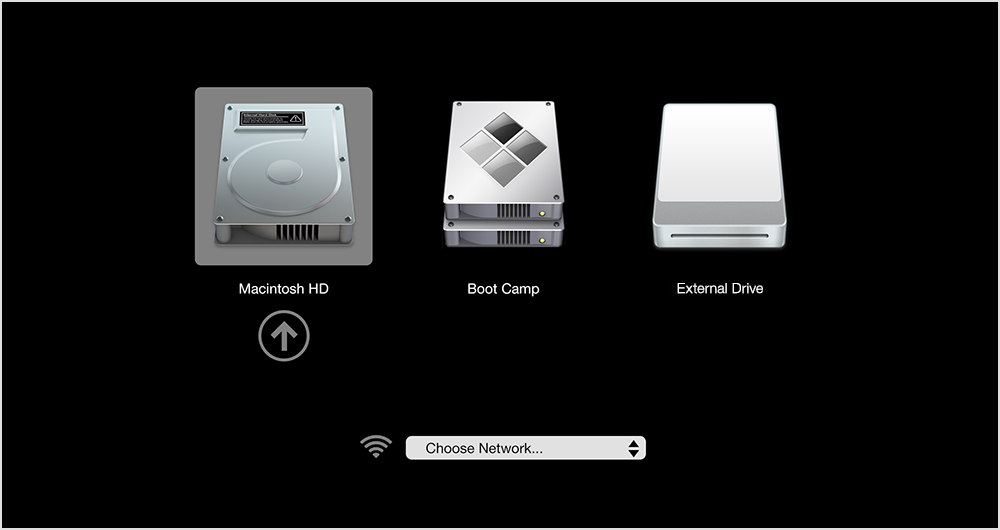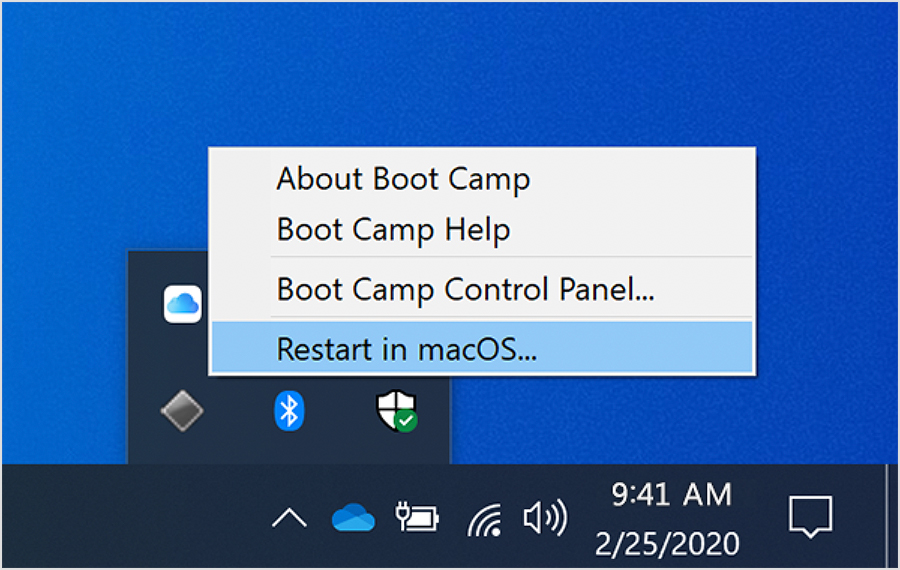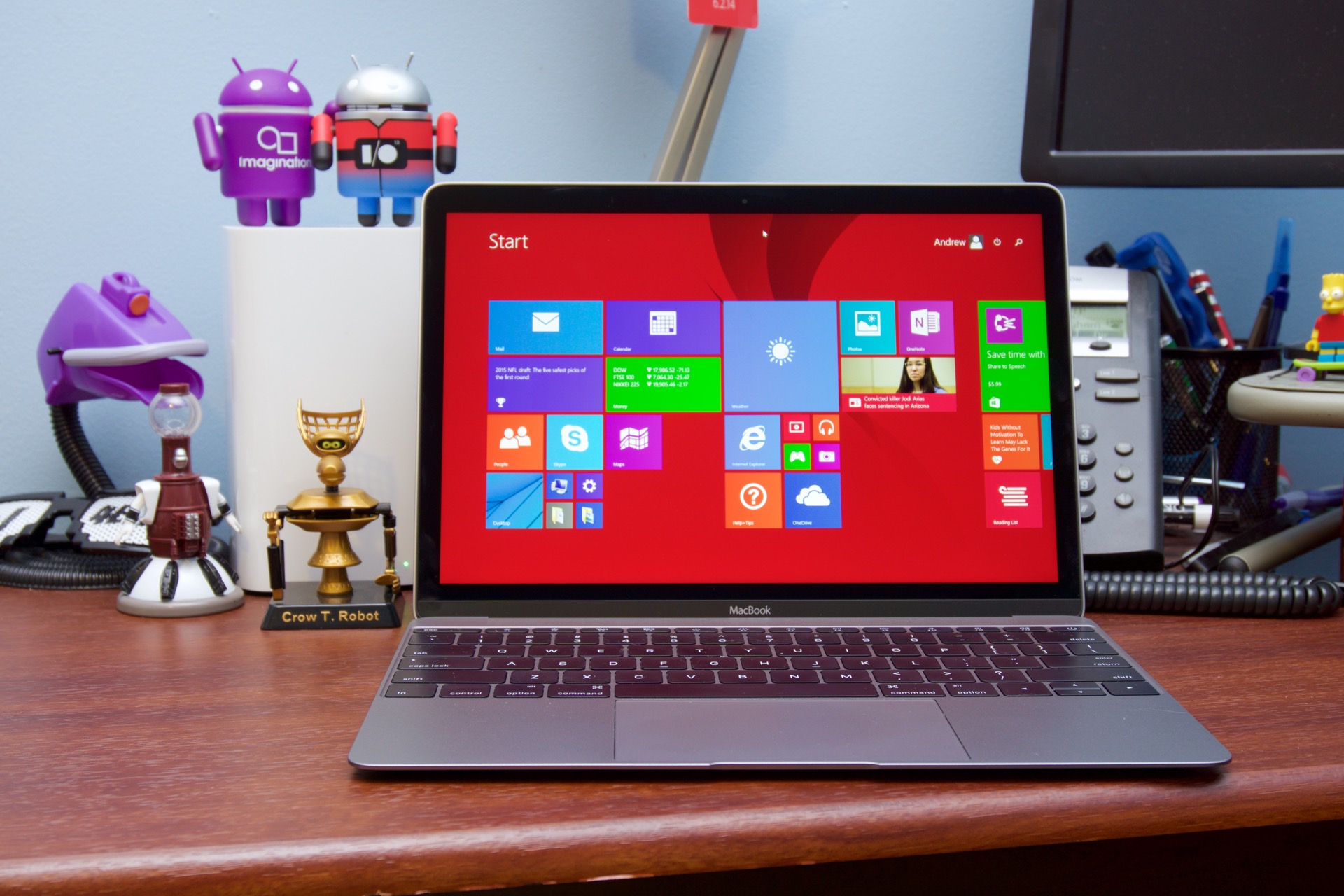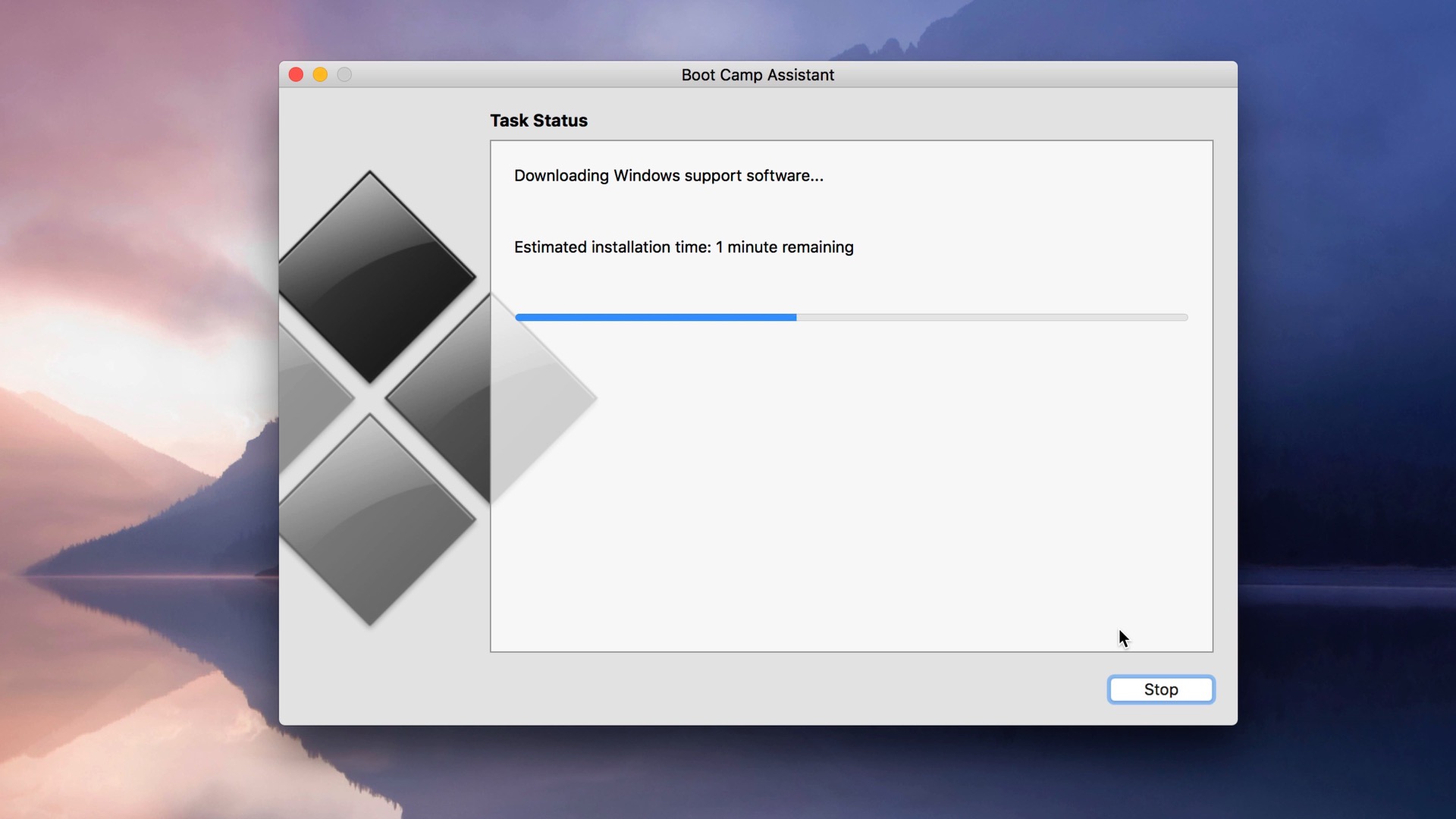- Bootcamp Windows 10 No Sound. Apple allows its users to install Windows 10 if they feel like using the operating system through a utility called Boot Camp. It conveniently lets the users switch between macOS and Windows, which is not available on a Windows PC.
- At the Create a Partition for Windows step, specify a partition size by dragging the divider between the macOS and Windows partitions. If you have multiple internal hard drives, you can select a different hard drive from the one running macOS and create a single partition on that drive to use solely for Windows.
Now that you have an install drive for Windows 10, it’s time to open the MacOS Boot Camp Assistant. Step 1: With Finder active, click Go on the menu bar. Step 2: Select the Utilities option on. DuckStation is an excellent PlayStation 1 emulator for Windows, Linux, macOS and Android by Ashwin on February 21, 2021 in Games, Software - Last Update: February 23, 2021 - 7 comments The PlayStation 1, Nintendo SNES, GBA, and DS are my favorite consoles of all-time because they have tons of RPGs.
Dec 21, 2020 • Filed to: Windows Computer Solutions • Proven solutions

Using Windows 10 on a Mac computer is easy than most people give it credit. Then again, it doesn't mean that that it doesn't come with particular problems of its own. Sometimes boot camping Windows 10 on the Mac computer could result in audio or sound issues. However, there are multiple methods to solve it, and we will show you four of them in our guide.
Bootcamp Windows 10 No Sound. How to Fix It?
Apple allows its users to install Windows 10 if they feel like using the operating system through a utility called Boot Camp. It conveniently lets the users switch between macOS and Windows, which is not available on a Windows PC. Though sometimes, this sudden switch of the operating system could result in specific hardware issues within the Mac, such as the sound problem. However, the Boot Camp no sound problem could be easily solved with the four methods listed below, and we will discuss all of them in our guide.
Macbook Bootcamp Windows 10 Blue Screen
Method 1. Update to the Latest Version of Boot Camp:
You may very well have an outdated version of Boot Camp installed on the Mac computer that could be causing the inability of the device to produce sound. It is wise to install the latest version of Boot Camp on the system, and here is the method to do that:
- From the Apple official website, go to Boot Camp Support and click on 'Downloads;'
- Find the latest version of Boot Camp and click on 'Download;'
- Now follow all the instructions stated with the interface of the Boot Camp utility and finish the installation;
- Restart your Mac computer once the installation is done.
Method 2: Install the Newest Version of your Audio Drivers:
If the sound on your Mac isn't working, then it may very well be due to the outdated version of your Mac's audio driver. You can fix the issue by quickly installing the latest version of the audio driver by following the instructions stated below:
- Open the Windows OS on your Mac and open the default browser;
- Go to Apple Support and search 'Downloads' from the search bar;
- From the 'Downloads' page, type 'Boot Camp Audio Driver' from the search bar;
- Click on the driver for Windows and download it;
- Locate the driver on your Mac and install it by following the built-in instructions;
- Restart your Mac after that.
Method 3: Download and Install the Latest Realtek Drivers:

Realtek is a convenient sound enabling company that helps in providing drivers for your Mac and Windows. The recent switch to the Windows OS on the Mac could disrupt the performance of the driver, and you would have to download and install the latest Realtek Driver on your Mac. Here is the method:
- Learn some information regarding the Realtek driver from the device manager of Windows before going to the Realtek Download Center from your browser;
- Type 'Drivers' on the search bar and enter;
- Locate the intended Realtek driver for your Mac and click on the 'Software' tab in front of the driver and download it;
- From your Mac, locate the driver, install it by following the instructions along the way;
- Restart the Mac system.
Method 4: Repair the Boot Camp Drivers:
There is a chance that the drivers of Boot Camp may be faulty. Despite, all of that, you could quickly fix the drivers by following the steps below:
- Boot into the Windows OS from your Mac and insert the Mac OS installation disk;
- Open the disk's folder and locate the Boot Camp folder;
- Double-click on 'setup.exe' and click on 'Repair' to initiate the process of repairing;
- Once the repair is done, restart your Mac and check whether the sound is working or not!
Recover Lost Data in Windows 10 with Recoverit:
It doesn't matter if you are using Windows OS on a conventional PC or the Mac computer, if your data has been accidentally erased, then it can be recovered with Recoverit Data Recovery software.
The application can work around more than 1000+ different kinds of files and formats and recover them. It also reads data from every type of file support format, including NTFS, FAT, HFS+, and APFS. By following three quick steps, you will be back to using lost data on your system within a few minutes.
Recoverit Data Recovery - The Best File Recovery Software

- Recover corrupted files from the computer, USB hard drive, memory card effectively, safely, and completely.
- Supports to restore corrupted files and loss due to virus attack, the program crashes or computer loses power.
- Recover any data and file types with a high success rate and without any quality loss.
- Supported OS: Windows 10/8/7/XP/Vista, Mac OS 10.13, macOS 10.12, OS X 10.11, 10.10, 10.9, 10.8, 10.7, 10.6.
Step 1. Select a location:
Run Recoverit on your Mac computer with whatever operating system(macOS/Windows) you are using. Select the preferred folder or disk and hit 'Start.'
Step 2. Scan the location:
The scan will not take long, but if you feel the urge to the recovered data beforehand, Recoverit offers the Pause and Stop button to halt the scanning process so that you can check your files. The interface will notify you of the successful scan with a pop-up message.
Step 3. Preview and recover files:
The retrieved data will be laid out under the following categories:
- File Type;
- File Path.
From there, you will be able to select the files both individually and collectively before hitting the 'Recover' button to store them anywhere you like permanently!
Conclusion:

Much like humans, machines can take a while to adjust to new surroundings. The same is the case with the audio drivers of the Mac when you switch the OS from macOS to Windows. However, as we learned in the article, no issue is too big, and one could solve the problem with any of the four methods we have discussed in this guide. Data loss can also occur under such circumstances, but you can recover every last bit with the Recoverit data recovery tool.
Feel free to share this guide amongst family and peers, especially if they are looking to use Windows on their Mac computer.
Macos Bootcamp Windows 10 Partition Size
Computer Data Recovery
- Windows PE
- System problems
- PC Errors
Boot Camp Assistant User Guide
You can use Boot Camp Assistant to install Windows 10 on your Intel-based Mac.
You need an external USB drive to install Windows on older Mac computers. To find out whether you have a Mac that requires an external USB drive, see the “Learn more” section in the Apple Support article Install Windows 10 on your Mac with Boot Camp Assistant. If your Mac is a newer model that doesn’t require a USB drive, follow the instructions in Install Windows on your newer Mac using Boot Camp instead.
What you need
The keyboard and mouse or trackpad that came with your Mac. (If they aren’t available, use a USB keyboard and mouse.)
A blank 16 GB or larger external USB 2 flash drive, formatted as MS-DOS (FAT).
To format an external USB drive as MS-DOS (FAT), use Disk Utility, located in /Applications/Utilities. In Disk Utility, choose View > Show All Devices, select the USB drive in the sidebar, then click Erase in the toolbar. In the dialog, enter a name for the drive, choose MS-DOS (FAT) from the Format pop-up menu, choose Master Boot Record from the Scheme pop-up menu, then click Erase.
A full-installation, 64-bit version of Windows 10 on a disk image (ISO file) or other installation media.
You can download a Windows 10 Disc Image (ISO File) from Microsoft.
Sufficient free storage space on your startup drive. For information about the amount of free space needed, see the Apple Support Article Install Windows 10 on your Mac with Boot Camp Assistant.

Before you begin
Before you install Windows, make sure you back up important files.
You can use Time Machine or any other method to back up your files. For information about backing up files, see Back up your files with Time Machine and Ways to back up or protect your files.
Perform the installation
Do the following steps in order.
Step 1: Check for software updates
Before you install Windows, install all macOS updates.
On your Mac, log in as an administrator, quit all open apps, then log out any other users.
Choose Apple menu > System Preferences, click Software Update, then install all available updates.
If your Mac restarts after installing an update, open Software Update again to install any additional updates.
Step 2: Prepare your Mac for Windows
Boot Camp Assistant prepares your Mac by creating a new partition for Windows named BOOTCAMP and downloading the Boot Camp support software.
Macbook Bootcamp Windows 10 Black Screen
Important: If you’re using a Mac notebook computer, connect it to a power source before continuing.
Connect an external USB drive or insert a flash drive into the USB port on your Mac; keep it connected or inserted while you install Windows and the Windows support software.
On your Mac, open Boot Camp Assistant , located in /Applications/Utilities.
At the introduction screen, click Continue.
The system is checked for total available disk space. Older Time Machine snapshots and cached iCloud files are removed to make space for Boot Camp. This process may take a long time to complete (you can click the Stop button to skip this process).
At the Select Tasks step, select all the tasks, then click Continue.
At the Create Bootable USB Drive for Windows Installation step, choose the Windows ISO image and the USB drive, then click Continue.
The Windows files are copied to the USB drive. This process may take a long time to complete (you can click the Stop button to interrupt this process).
At the Create a Partition for Windows step, specify a partition size by dragging the divider between the macOS and Windows partitions. If you have multiple internal hard drives, you can select a different hard drive from the one running macOS and create a single partition on that drive to use solely for Windows.
Click Install.
Macos Catalina Bootcamp Windows 10
When this step is complete, the Windows installer starts.
Step 3: Install Windows
In the Windows installer, follow the onscreen instructions.
When you’re asked where to install Windows, select the BOOTCAMP partition (you may need to scroll through the list of partitions to see it), then click Next.
WARNING: Do not create or delete a partition, or select any other partition. Doing so may delete the entire contents of your macOS partition.
Continue following the onscreen instructions to finish installing Windows.
After you install the Windows software, your Mac automatically restarts using Windows.
Follow the onscreen instructions to set up Windows.
Step 4: Install Boot Camp on Windows
After installing Windows, Boot Camp drivers that support your Mac hardware start installing.
Note: If the support software doesn’t install automatically, you need to install it manually. For instructions, see the Apple Support article If the Boot Camp installer doesn't open after using Boot Camp Assistant.
In the Boot Camp installer in Windows, follow the onscreen instructions.
Important: Do not click the Cancel button in any of the installer dialogs.
If a message appears that says the software you’re installing has not passed Windows Logo testing, click Continue Anyway.
You don’t need to respond to installer dialogs that appear only briefly during installation, but if a dialog asks you to install device software, click Install.
If nothing appears to be happening, there may be a hidden window that you must respond to. Look behind open windows.
When the installation is complete, click Finish, then click Yes to restart your Mac.
After your Mac restarts, follow the instructions for any other installers that appear.
